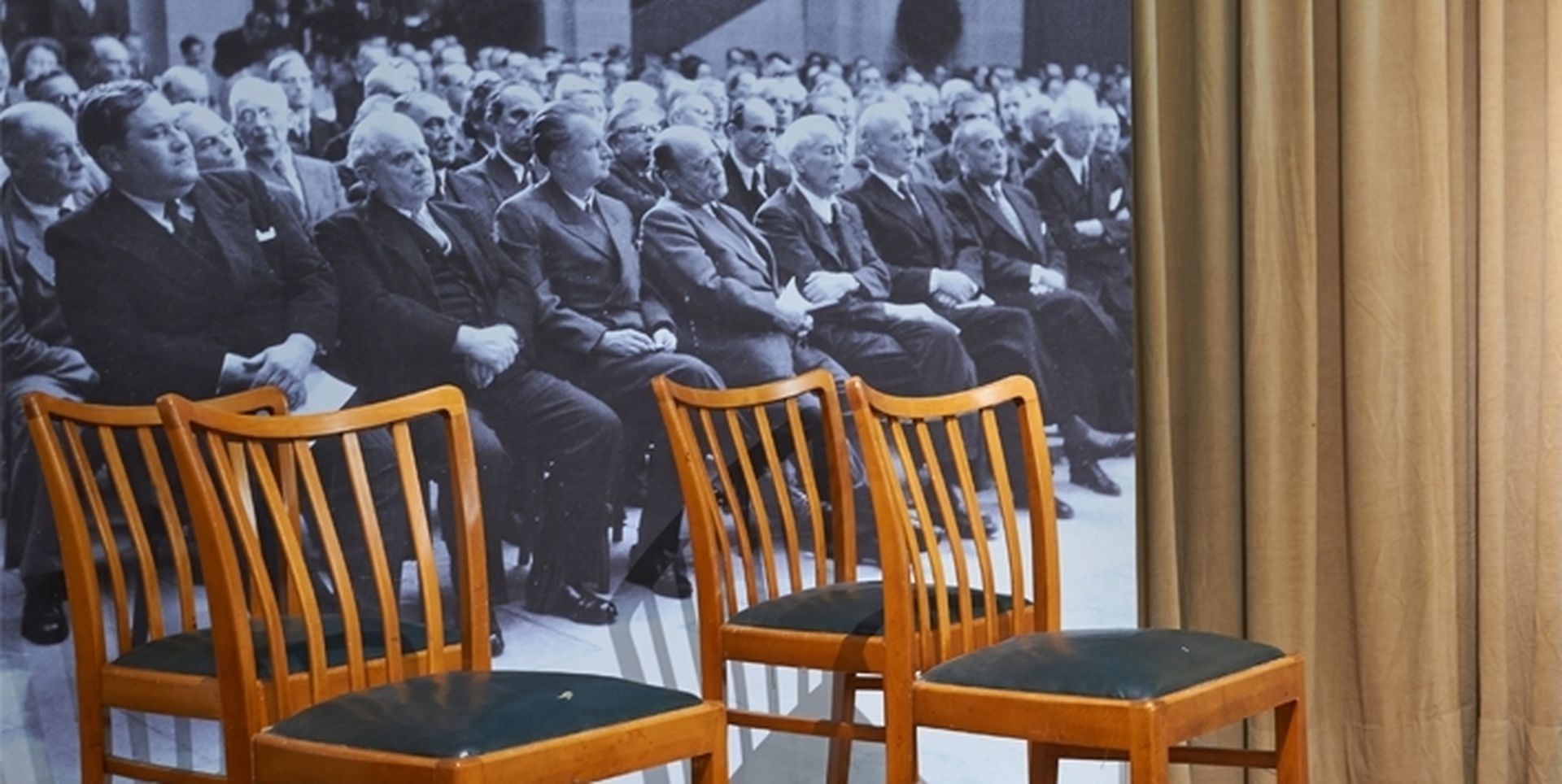The road to becoming a modern research museum was a long one: Museum Koenig Bonn looks back on an exciting history that is closely interwoven with the history of the Federal Republic of Germany.
Alexander Koenig
Our museum was founded by the Bonn-based private scholar Alexander Koenig (1858-1940) as a private research and exhibition institute. He came from a German family that settled in St. Petersburg, Russia, in the late 18th century and specialised in the sugar industry and sugar trade.
Alexander's father, Leopold Koenig, was one of the most important sugar traders in Russia in the late 19th century and the owner of large estates in what is now Ukraine. Alexander Koenig himself grew up mainly in Bonn, where his father had acquired a villa on the banks of the Rhine. At the time, the villa, which later became Villa Hammerschmidt, was on the outskirts of the city; today it is located in the centre of the government district of the former German capital.
Even as a boy, Alexander Koenig had a great interest in natural history and began to amass large collections, especially of mammals and birds. He later studied zoology at the universities of Greifswald and Marburg. In 1884, he was awarded a doctorate in natural sciences (Dr rer. nat.) at the University of Marburg with a thesis on taxonomic problems in mallophages (bird lice).

Alexander Koenig organised a series of privately funded expeditions to the Arctic region around Spitsbergen and to northern and north-eastern Africa.
He visited Egypt and the Kordofan region of what is now Sudan, where he collected a number of birds and large mammals, including two giraffes that are still on display in the permanent exhibition today.
Alexander Koenig died on 16 July 1940.
From the laying of the foundation stone to the Basic Law
The foundation stone for today's museum building was laid in 1912. However, due to the turmoil of the First World War and the politically and economically difficult years that followed, the inauguration could not take place until 1934. In 1929, Alexander Koenig transferred his museum to the Prussian government, which was administering the Rhineland at the time.
Soon after the inauguration of the museum, the first zoologists were employed, who immediately began to systematically build up the museum's now world-famous scientific collections. After the Second World War, the large exhibition hall with its beautiful glass roof was the only large representative assembly room available in Bonn.
On 1 September 1948, the inaugural meeting of the Parliamentary Council, which drew up the Basic Law of the Federal Republic of Germany officially proclaimed on 23 May 1949, took place in the museum's atrium. The museum is therefore proud to be able to call itself the birthplace of the Federal Republic.
The federal giraffe
Every child loves giraffes. At the zoo, in the museum or perhaps even in nature, we stand in awe in front of this huge animal. And despite their long necks, giraffes only have six cervical vertebrae - like almost all mammals. Males can reach a height of almost six metres and weigh up to 2,000 kilograms; add to this the unusual pattern, the long legs and the particularly long neck - the giraffe is truly unique in the animal kingdom! It is understandable that Alexander Koenig (1858-1940) also wanted to own this special animal species for his natural history museum in Bonn to present it to visitors in the central atrium.

How did the two Bonn giraffes get their strange names?
Apart from the species-specific characteristics of the giraffe that distinguish it from all other animal species, the two specimens in Museum Koenig have a very special story that led to their strange name.
When Germany was to have a new government after the end of the Nazi dictatorship, the constituent meeting of the Parliamentary Council took place in the Museum Koenig in Bonn on 1 September 1948, as no other representative building was available. Before this could happen, however, the large taxidermied animals set up in the atrium had to be moved to the side corridors - including the two large giraffes.

In an article entitled "On the start of the Parliamentary Council in Bonn", Walter Menzel (1901-1963), then Deputy Prime Minister of North Rhine-Westphalia, reported on the preparations in Bonn in the "Rheinische Zeitung" on 28 August 1948 under the heading "A giraffe in the Parliamentary Council". He wrote truthfully: "(...) the long-necked giraffe was moved aside a little," only to immediately answer the question he himself subsequently posed as to why it was only moved aside and not completely removed?
